On July 15, the Centers for Medicare & Medicaid Services (CMS) released the CY 2026 Proposed Rule for the Medicare Outpatient Prospective Payment System (OPPS). The proposed rule introduces several significant policy changes that will impact hospitals and ambulatory surgical centers (ASCs) beginning Jan. 1. From updates to the 340B payment policy and ambulatory payment classifications (APCs) to the elimination of the Inpatient-only (IPO) list and expanded reporting requirements, the CY 2026 OPPS rule is one of the most comprehensive updates in recent years. CMS projects an overall $1.61 billion increase in OPPS payments before accounting for the 340B remedy offset, which is expected to reduce payments by $1.1 billion, resulting in a net increase of approximately $510 million. This blog post breaks down the most important proposed changes, financial impacts and reporting requirements so your organization can prepare for compliance and optimize reimbursement strateg...
